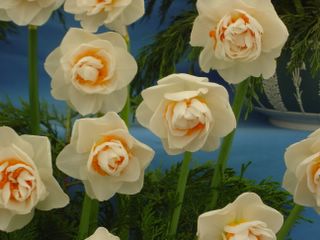Get out the Atlas -- the NEW One!
Well, he didn't know anything about it either, until a few weeks ago. Moldova is one of the "republics" of the Former Soviet Union -- now an indpendent country. It's quite small -- only 3.3 million people -- and is squeezed in between Romania and Ukraine. For much of its history it was part of Romania and, after World War II, found itself part of the USSR -- whether it wanted to be or not. Today the population speaks both Romanian and Russian and the country is trying to get on its feet. At the moment it's the poorest country in Europe -- the director of the Institute for Applied Physics, a very distinguished physicist and professor whom we visited --- earns about $1200 per year, and doesn't get paid every month.
The main difficulty is caused by the fact that almost all Moldovan industry consists of plants that were part of larger industrial entitities that were Russian dominated. After the collapse of the USSR, these very specialized plants, which made components for things assembled in Russia, found themselves without customers or orders.
The population is highly literate and very well-educated -- and after what the country has been through for the last 60 years is highly motivated and willing to work. Unfortunately, it's taking a while for the necessary economic reforms to take place and take effect. While many of the industries are now "joint stock companies", the fact is that the government is the largest shareholder in most of them. Since the country is not yet a part of the European Union, and since the government does not yet permit foreign investment, except in limited circumstances, there is no access to most means of funding. So plant managers must find ways to make products people want, but to do so in the plants and with the equipment they have on hand -- much of which was very specialized for predominantly military products. Despite this, some of them are showing remarkable creativity -- one plant we visited, specialized in the production of military sonars -- has figured out a way to make over 70 "consumer products" with machines and facilities designed for a different purpose.
Also, it was apparent from our visit with leading members of the science, industry and academic sectors of the country, as well as the Minister for Industry, that there are many very capable researchers working -- in most cases in terrible facilities. There is no shortage of smart people with good ideas.
We, at the Office of Naval Research, don't have the funds (or the charter) to invest in industrial development. But we do hope to be able to foster some joint research efforts between some very qualified Moldovans and American partners. Such projects would only introduce small amounts of money into their economy but might build foundations for greater economic activity as research matures into products. In addition, we can help some small numbers of their best people with travel expenses to attend international conferences which will allow them to "network" and make needed contacts.
One bright spot in the Moldovan economy is the wine industry, which is producing high quality wines that are developing a following. Several of us living in London have noted in recent months that Moldovan wines are increasingly available in London shops -- and those who are far better wine tasters than either of us are assure us that they are good wines. The Minister of Industry mentioned the wine industry as the number one money earner in Moldova -- and also mentioned that it is fully privatized. We assume there is a connection there.
Most of us who have visited the country have found it to be one of our favorites, with people we really like -- but with many problems to be solved. Despite the problems, one gets a good feeling walking around Chisnau, the capital -- the people are busy, interested and interesting, living well under difficult circumstances. In fact, from just interacting with the people, one could believe he was in any modern Eurpean country. Chuck found them truly admirable.
For more pictures of Moldova, beyond those shown below, go to: http://chuck.smugmug.com/gallery/560980

The lobby of the hotel we stayed at -- nice rooms, beautiful
public rooms -- and a place few Moldovans could afford to
patronize.

We were surpised to see that even in poor Moldova, the
latest edition of Star Wars opened at the same time it
opened in London

It's probably not really evident in this photo -- but most
of the industrial or academic or scientific-related buldings
are holdovers from the Soviet era and exhibit the same
spalling concrete and all-round dilapidation that Soviet
buildings seem to display everywhere.







